Mailchimp Review: Core Features, Pros and Cons, Pricing and More
What’s the first brand that springs to mind when you think of email marketing software?
For me, the answer is Mailchimp. And I’d argue that most people in the US would say the same.
When it began in 2001, Mailchimp’s smart marketing positioned it as the #1 brand in the email marketing software space.
Back in my short-lived corporate days, I used Mailchimp extensively (it was the best tool at the time). Years have passed since and I no longer use Mailchimp today. But millions of people still do, even in the current era of TikTok and plant-based meats.
Does being the most well-known brand equate to the best product? And how has Mailchimp improved over the years?
Let’s take a closer look and find out!
What is Mailchimp?

Mailchimp is a third-party email marketing software that allows you to manage your email lists, newsletters, run automated marketing campaigns, and much more.
Mailchimp caters primarily to small businesses. Its heavy users are e-commerce store owners, digital businesses, freelancers, and marketing agencies.
Most users use Mailchimp to manage their newsletters, run email marketing campaigns, and set up autoresponder sequences.
Mailchimp’s Pricing Plans
Mailchimp seems to be competitively priced compared to other email marketing tools, but the costs can increase exponentially as your email list grows.
Here are the basic pricing tiers:
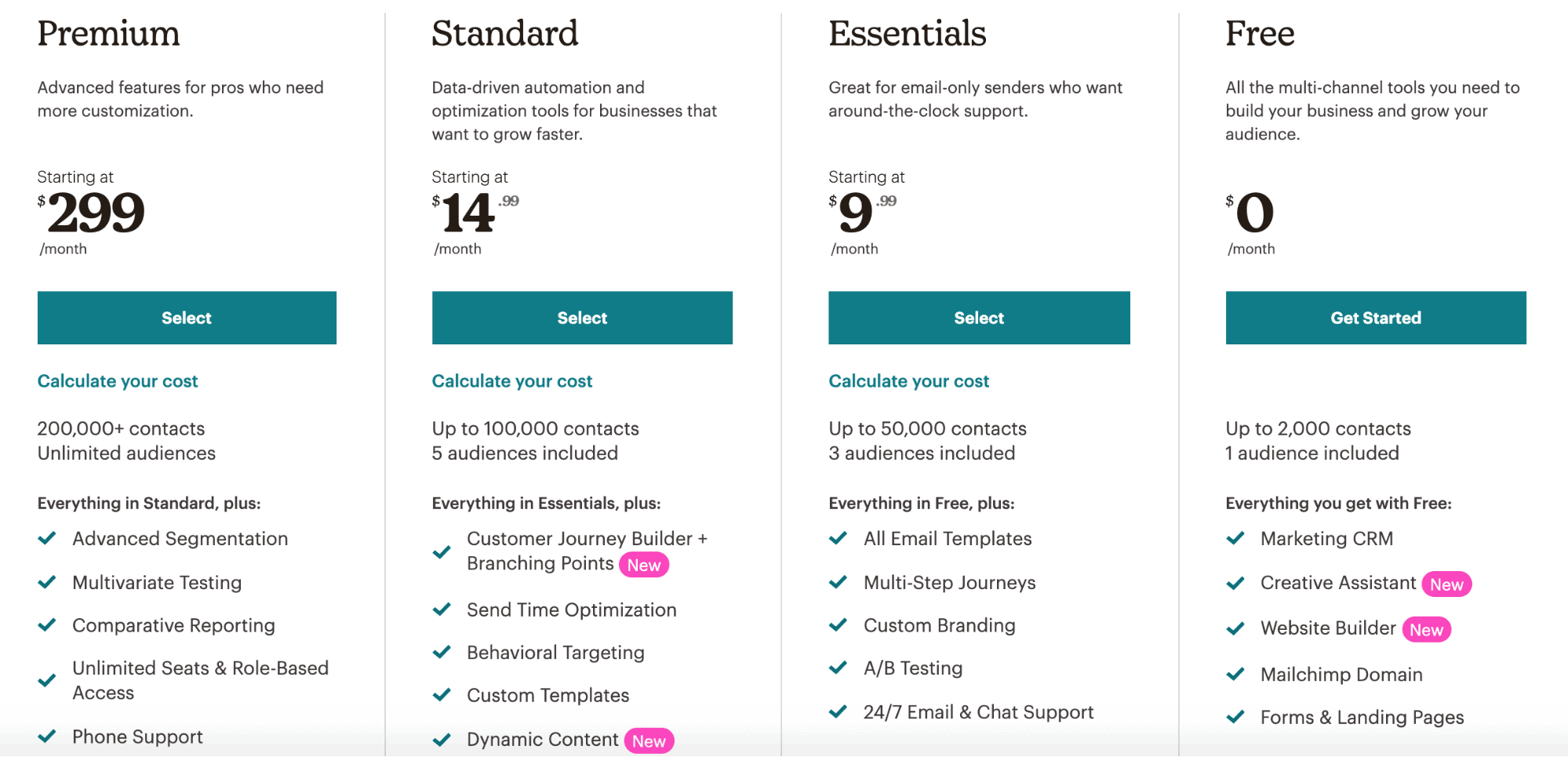
This is the basic pricing plan if paid yearly:
- $0/month: Free Forever – 2,000 contacts & 1 audience
- $9/month: Essentials – 50,000 contacts & 3 audiences
- $14/month: Standard – 100,000 contacts & 5 audiences
- $299/month: Premium – 200,000+ contacts & unlimited audiences
That said, there’s a caveat here. Note how the Essential and Standard pricing tiers mention “up to X contacts.”
Here’s how much extra you’ll have to pay if your email list has 10,000 subscribers on the most basic plan (Essentials):
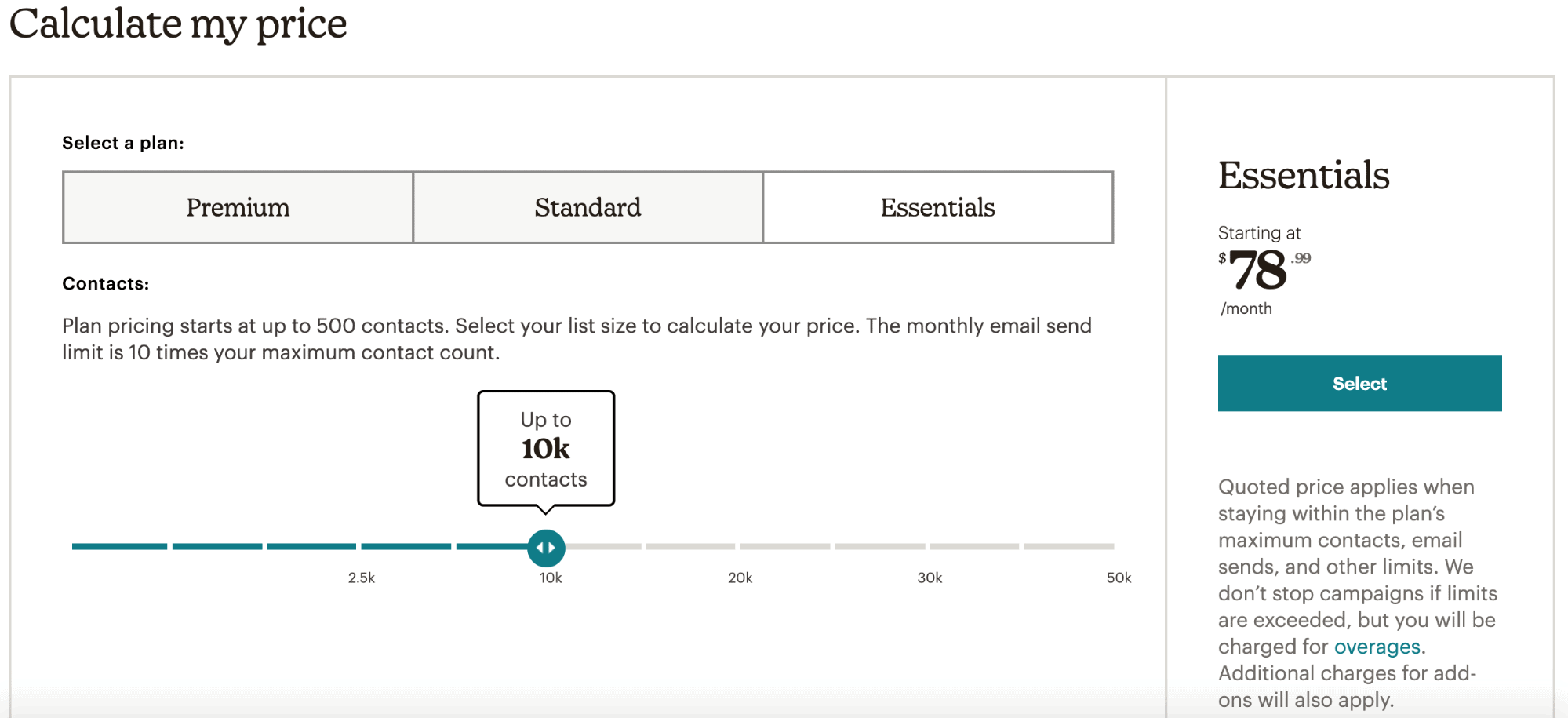
$78/month is a significant increase and it goes up to $270/month at 50,000 subscribers. It’s almost double that price on the Standard plan. As you can see, the prices can add up quickly.
To give you perspective, you can get lifetime access to SendFox for $49 and manage up to 5,000 subscribers for a one-time fee. (For a one-time payment of $147, you can manage up to 15,000 subscribers.)
Let’s see what Mailchimp has to offer for these price tags!
Core Features
Mailchimp has definitely continued improving their product over the years, adding some neat new features that we’ll cover here.
Before we dive into the core features, let’s explore how you can manage the audience on your email list:
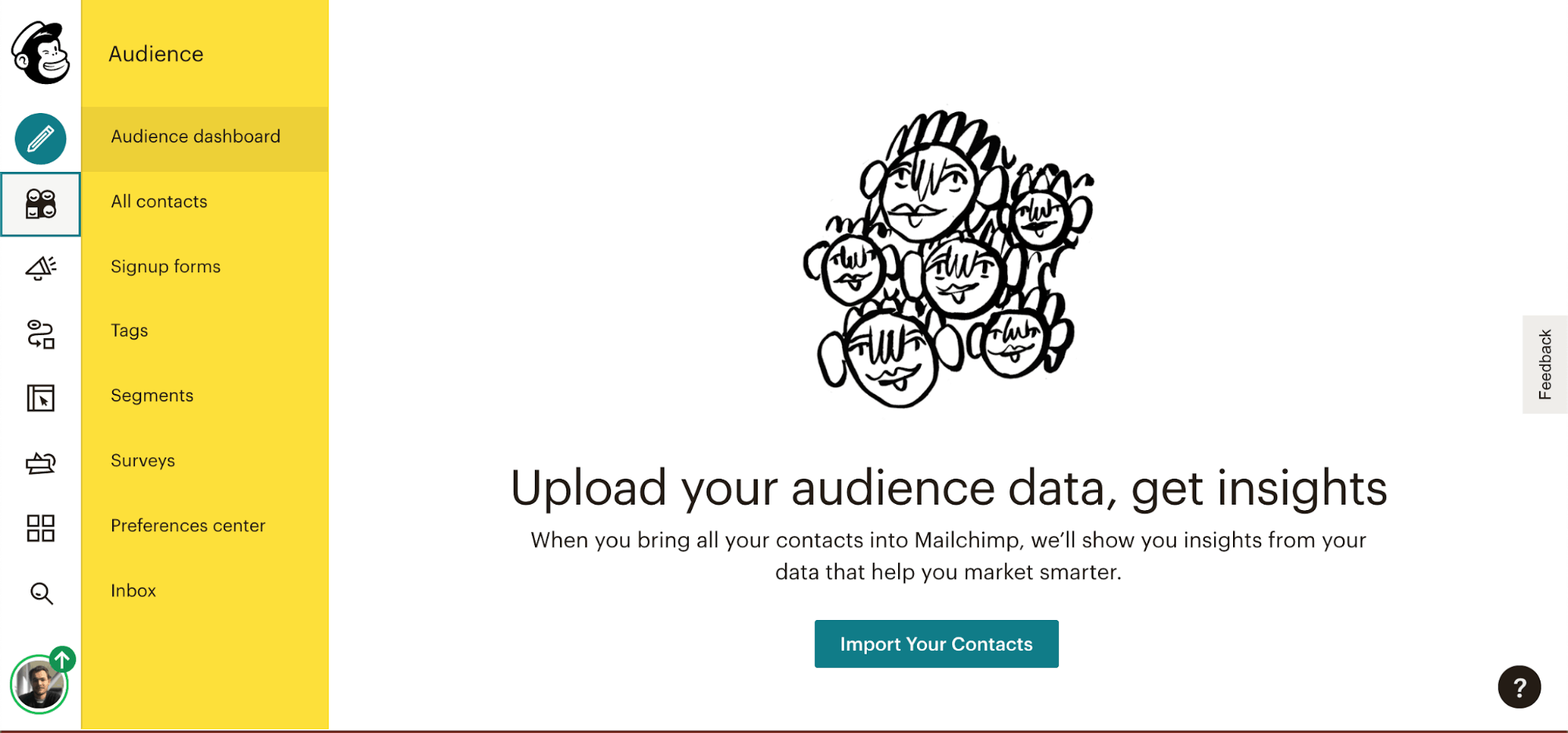
If you already have an email list, you can import it directly into Mailchimp and start managing it. You can also set up sign-up forms, like popups that integrate with your website, to start building or growing your existing list.
The tagging feature allows you to label and filter your audience based on location, where they opted into your list from, engagement, activity, and more. By tagging your subscribers, you can segment your audience and send personalized, relevant emails to specific segments.
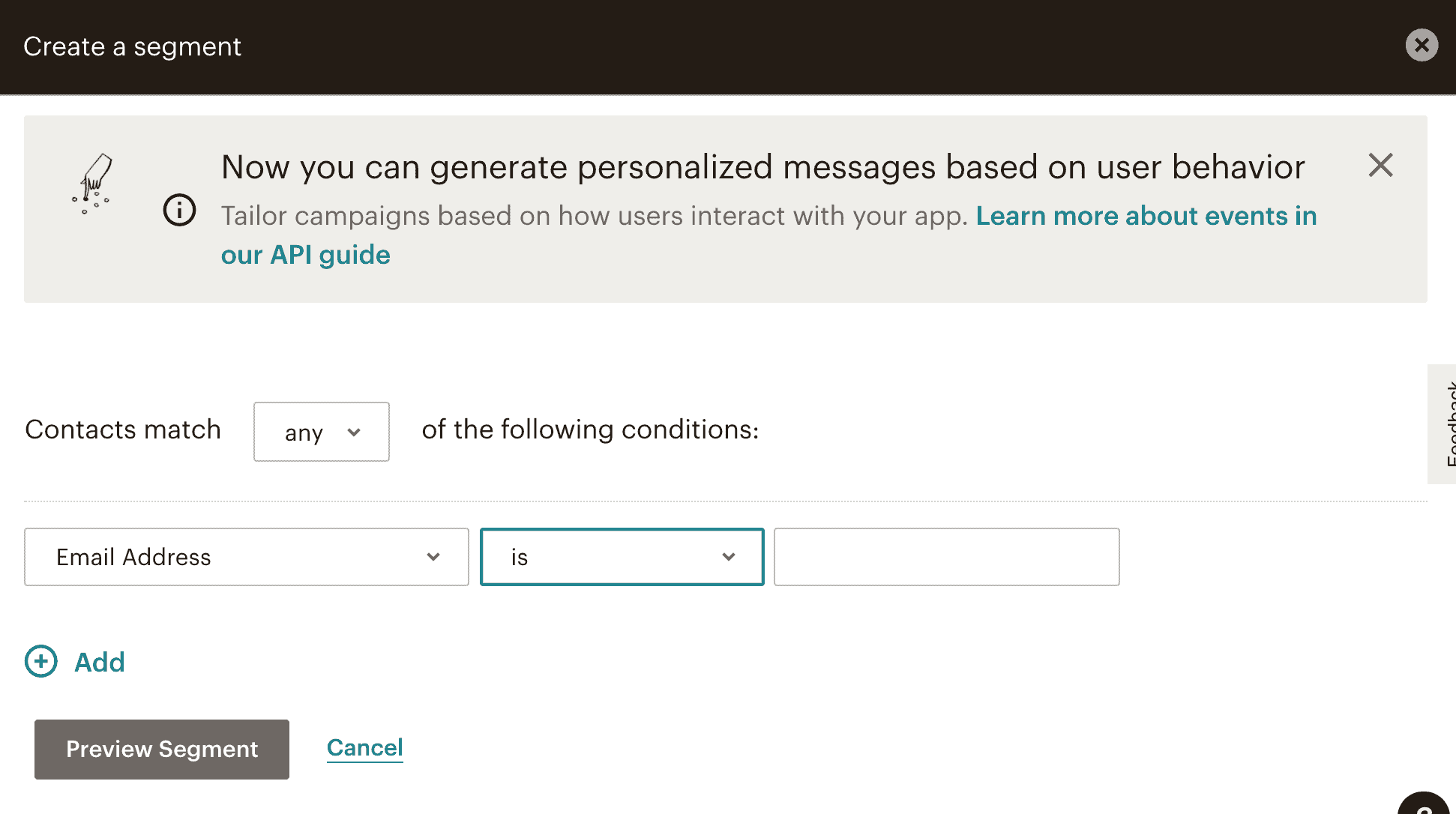
Now, this is straightforward and most email marketing platforms have this feature. Nothing too special here. However, I do think the built-in survey feature is a powerful addition that you can use to nail down segmentation.
That’s about it for managing your email list. Let’s get into the core features!
1. Creating campaigns
One of the features that was largely responsible for propelling Mailchimp into the top position in the email marketing space (aside from the fun winking mascot) was the campaigns feature.
Mailchimp was one of the first tools in the email marketing space to enable people with zero design skills to design polished emails.
Here are some of the campaign types that you can create:
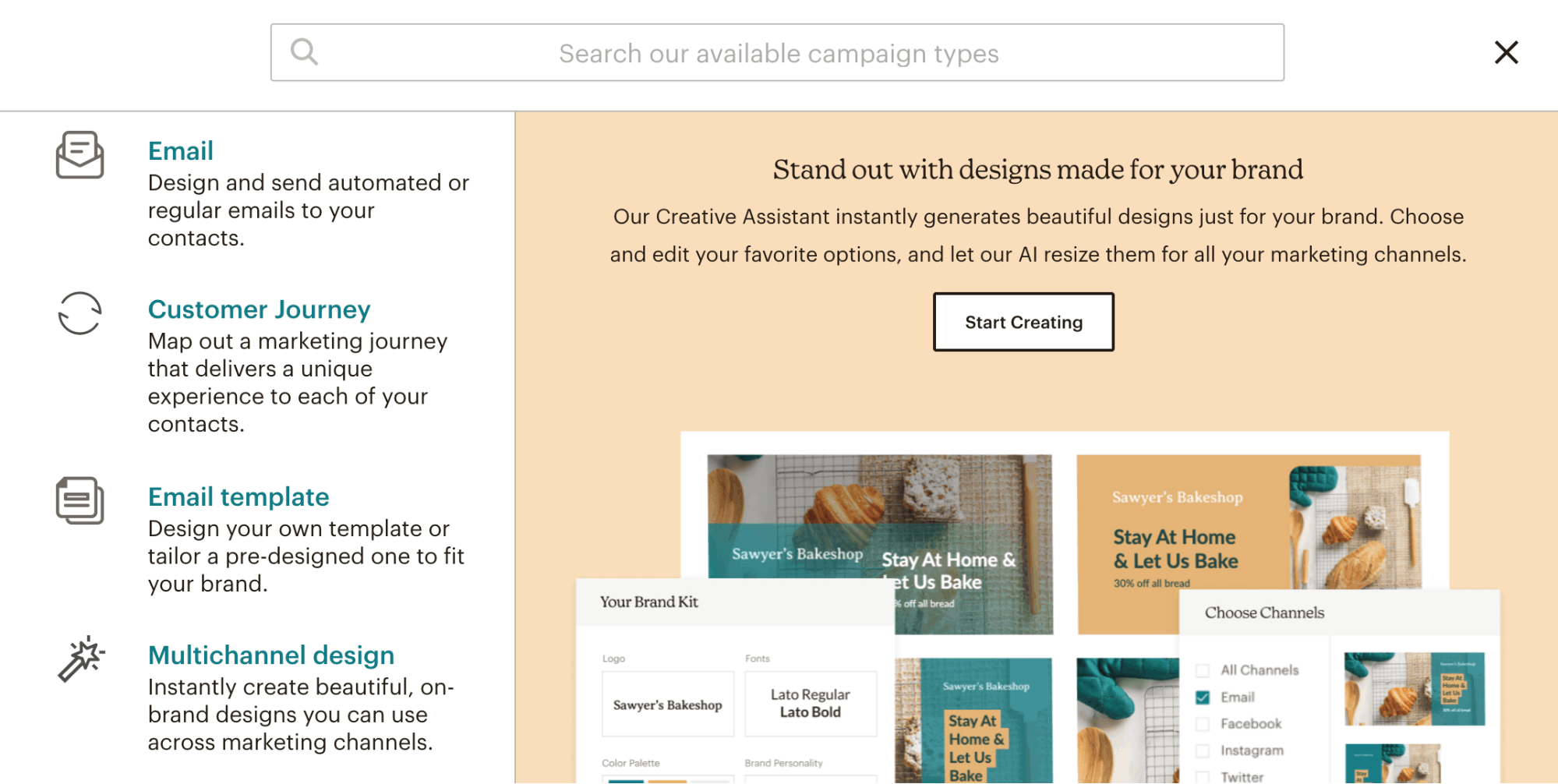
It’s not shown in the screenshot above, but there’s also a new feature that allows you to create and post Facebook ads.
I wanted to create a regular HTML email, so I went ahead and clicked on the email template. Here’s where Mailchimp provides you with 3 different options to create campaigns:
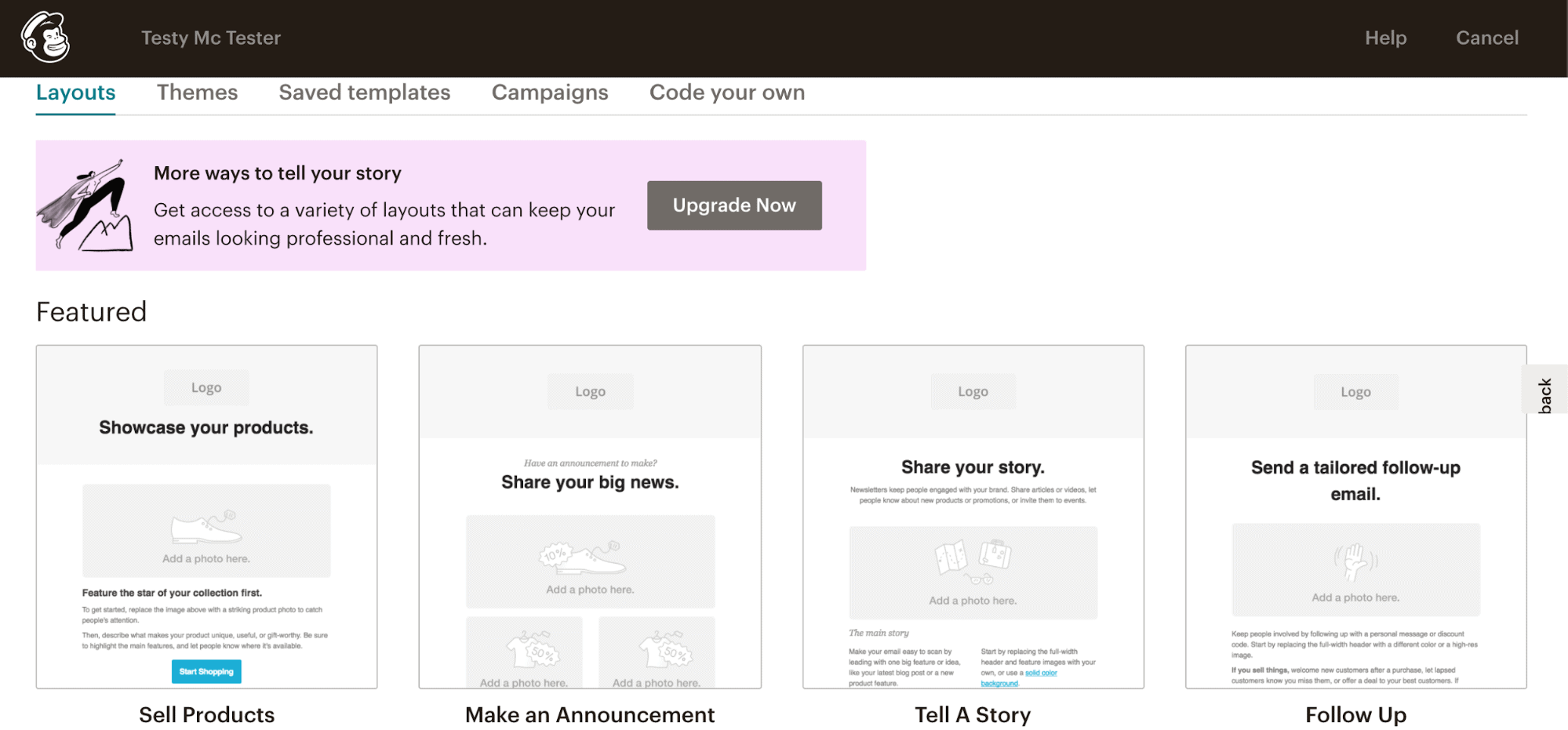
You can either use the layouts (templates) that consist of pre-designed blocks, themes (similar to the layouts except they come with stock images), or code your own design.
To use the templates, all you need to do is select one and start adding content or customizing the layout. This is what the editor looks like once you select a template:
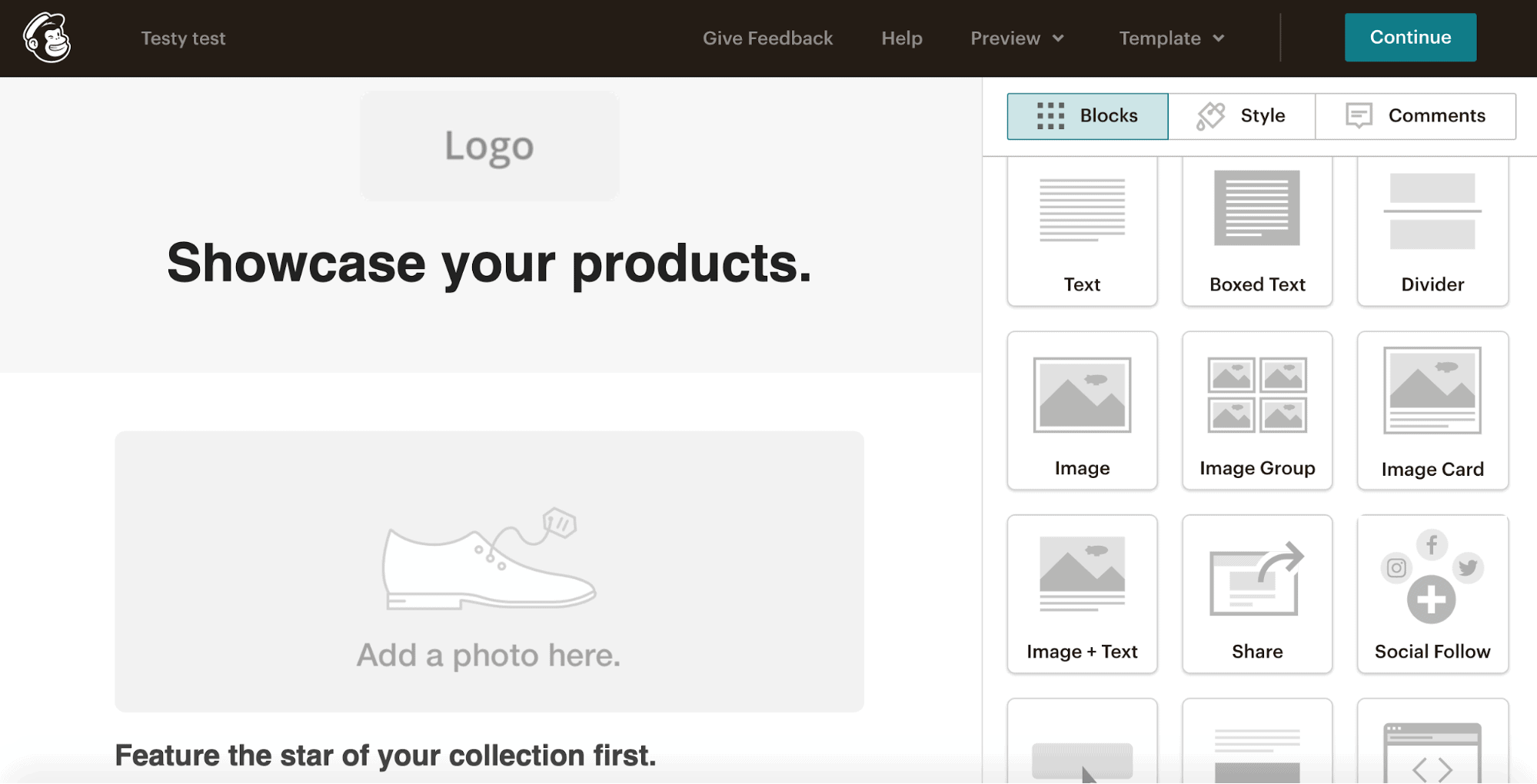
Once you’re in the editor, you’ll see the tools or blocks on the right and the preview on the left.
Of course, the UI is that beloved drag-and-drop functionality that enables you to create some neat designs with code-free block building. No code for the win!
2. Automations & Integrations
As a marketer, I’m always looking to optimize my workflows. And since I hate repetitive tasks, I automate (or outsource) what I hate doing.
That’s why I was so excited to dig into Mailchimp’s integrations and automations. What can you automate with Mailchimp?
Mailchimp offers customizable automated workflows for your audience, e-commerce, marketing, and special events.
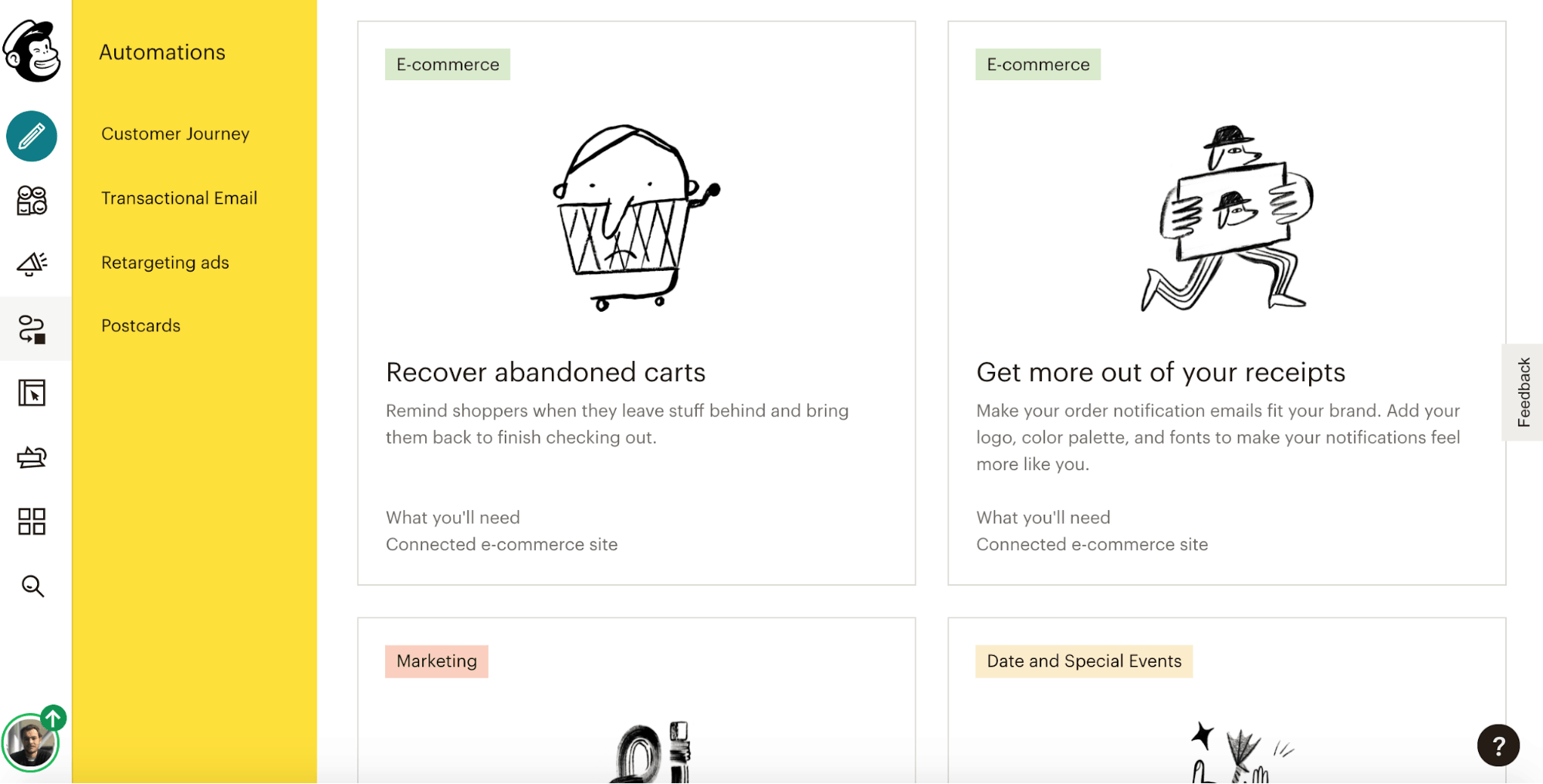
I like that the platform includes templates that can get you started quickly. The autoresponder templates are solid. Plus, you can set up email sequences to recover abandoned carts, set up a welcome email series, and more in a hot second.
There are hundreds of integrations you can choose from whether you’re an e-commerce store owner, blogger, or small business owner. You can integrate with the most popular apps as well some more niche ones.
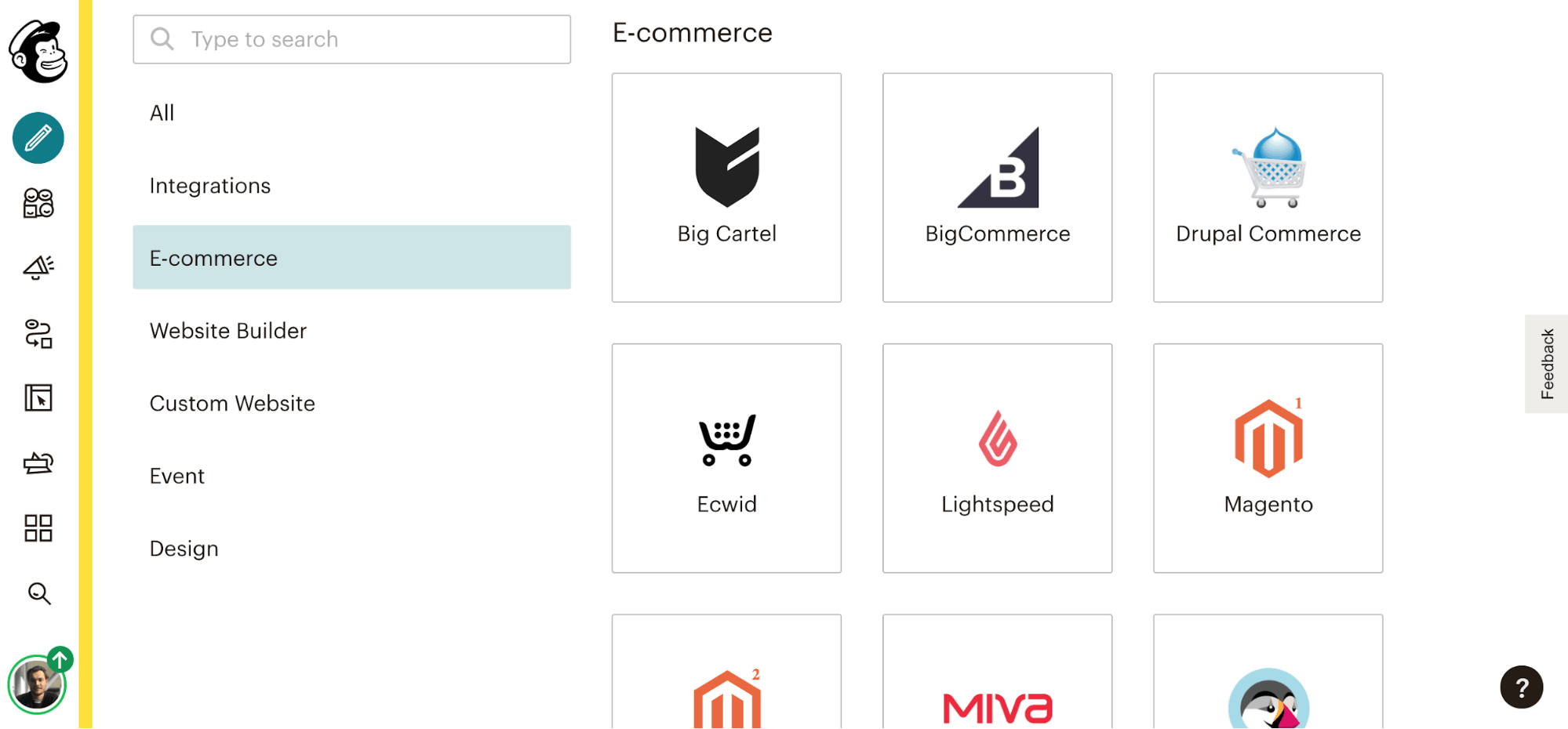
That said, the automation template library is small and you only have around 20 templates to choose from.
In any case, the most fun part is creating your own automated workflows. And Mailchimp has a pretty neat UI for this that gives you a visual representation of the sequence you’re building.
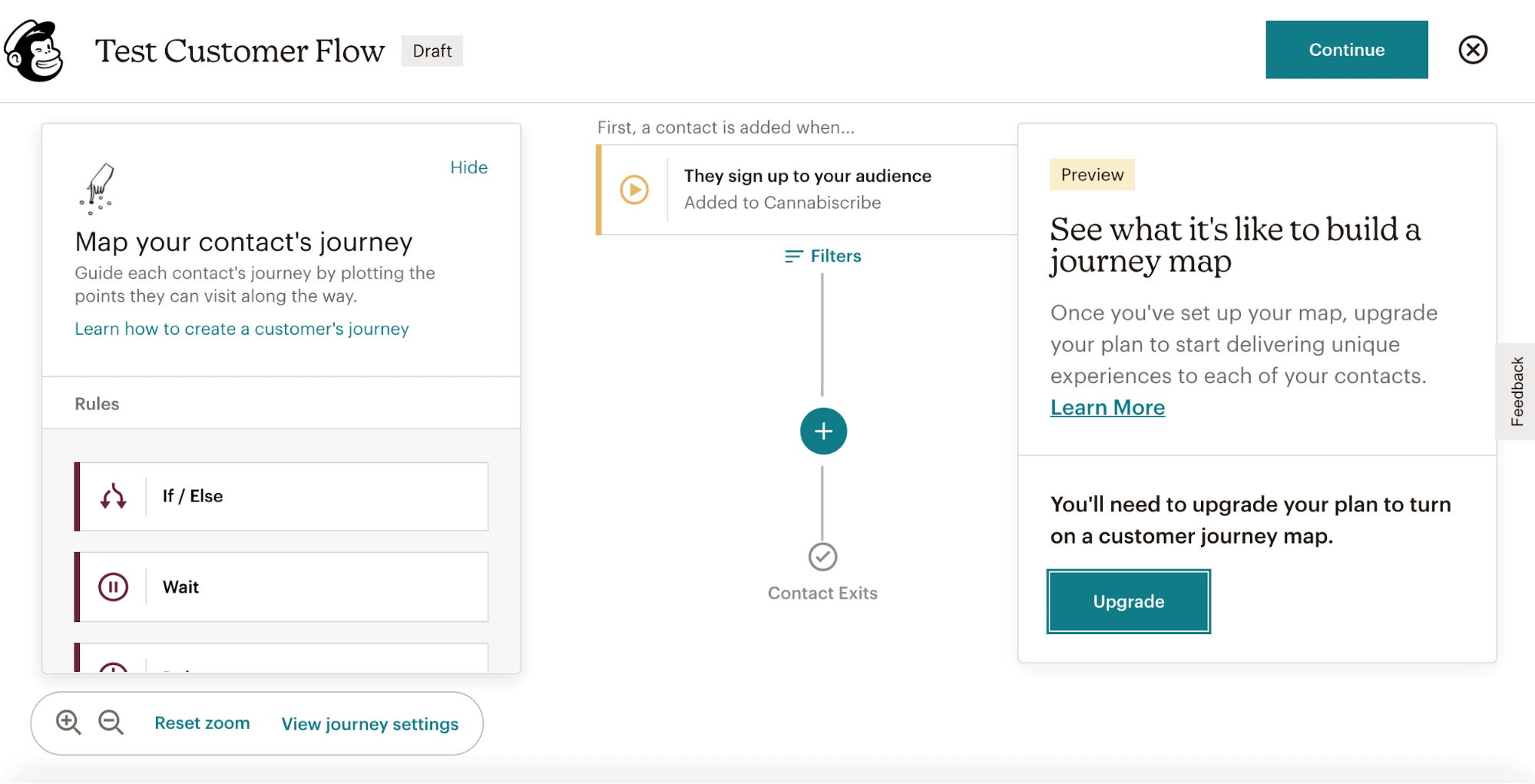
The email automation setup is quite robust and gives you the option to set up rules to send follow-up emails based on certain conditions such as opens and clicks. There are also more complicated automations you can set up depending on your goals.
The If/Else/Wait logic for mapping your contact’s journey isn’t very user-friendly, but Mailchimp offers a handy resource to help you understand the concepts and get set up. I think companies like MailerLite do a much better job here.
Overall, the automations and integrations will suffice for most beginner users. But for more advanced templates and intuitive workflows, you might want to check out Active Campaign (over 500 templates, or “recipes” as they call them) or MailerLite.
3. Reporting: Insights and Analytics
Mailchimp’s reporting features are very thorough. They contain essentially everything you need including client, geographic, and social media tracking as well as a Google Analytics integration.
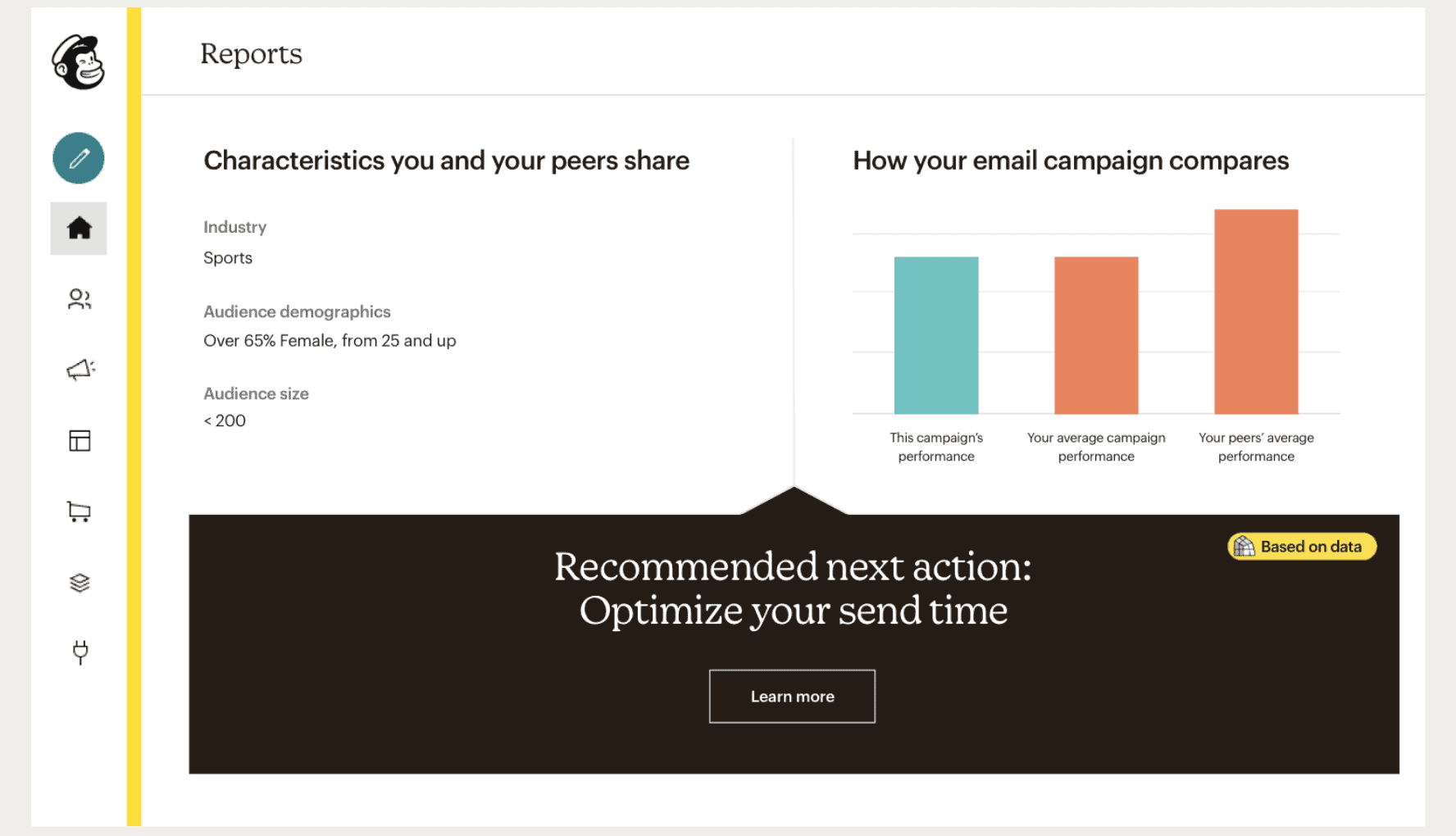
One of the neatest features here includes smart recommendations that Mailchimp provides you based on your customers’ behavior.
For example, if you’ve integrated your e-commerce store to Mailchimp, you can get granular data on how likely a customer is to make a repeat purchase (i.e. purchase likelihood).
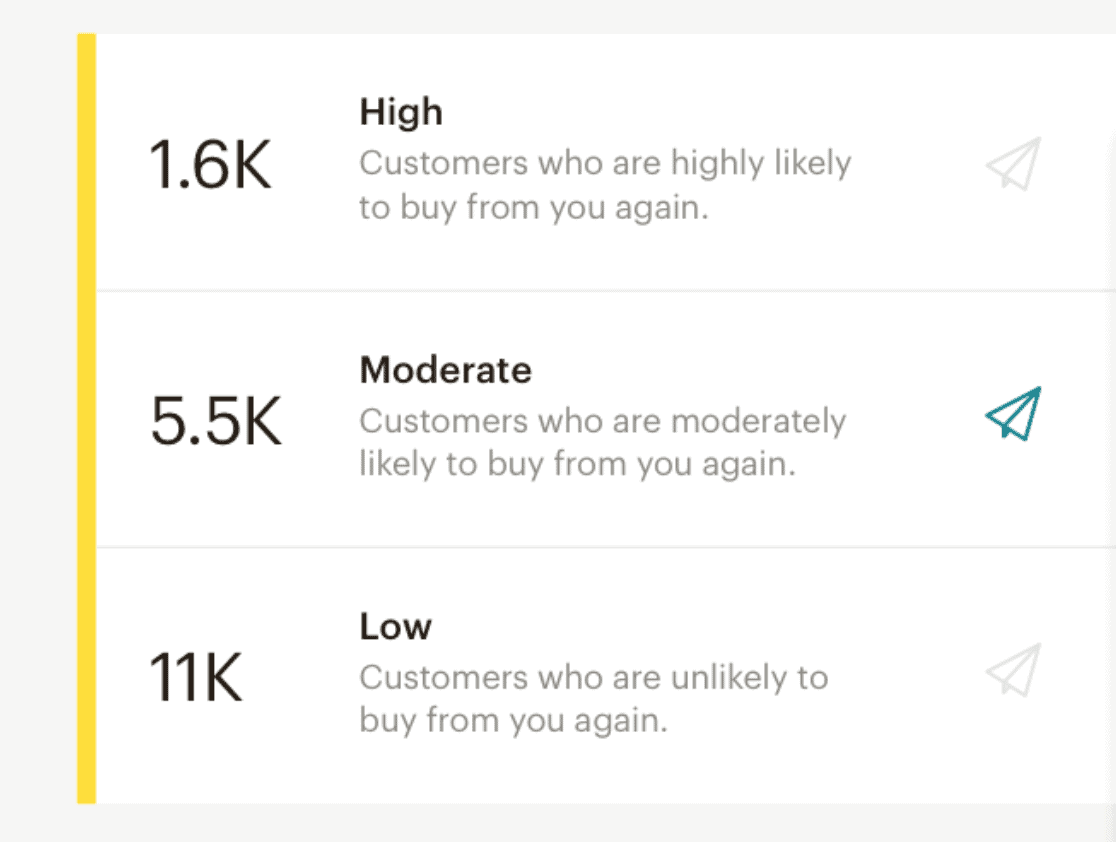
This feature is commonly known as predictive insights and it allows you to make data-backed decisions on customer behavior. Based on this data, Mailchimp provides you personalized product recommendations for specific customers.
Mailchimp also offers other data points like customer lifetime value (LTV), which you can use to easily segment your customers and target high-value customers with personalized messaging.
Aaaand that’s a wrap on the features! We’ve gone through some of Mailchimp’s core features, and highlighted some of the latest micro-tools they’ve added to the toolkit. Now it’s time to explore some of the potential drawbacks and advantages.
Pros and Cons
As mentioned earlier, Mailchimp is the #1 brand in the email marketing space, but it doesn’t necessarily mean it’s the best in terms of features.
Like most tools, it’s not a one-size-fits-all platform and it does come with its own drawbacks and advantages.
Pros
- Generous (but feature-limited) “free forever” plan
- Easy-to-use editor and creating campaigns is a breeze
- Tons of integrations, so there’s something for everyone
Cons
- Paid plans are expensive (especially if you have a large email list and need advanced features)
- Marketing automations are not as robust or intuitive as other tools, like Active Campaign
- Small library of pre-built automation workflows
Final Thoughts
Mailchimp is one of those tools that has extremely lovable branding, adorable chimp and all. Plus, when it comes to functionality, it offers everything that most users will need.
That said, certain features are only available on the pricier tiers. You may find yourself paying a hefty monthly bill if you want full functionality and a quickly growing subscriber base.
So, should you get Mailchimp?
If you’re a beginner, I highly recommend taking the freemium plan for a spin until you’ve maxed out your usage. From there, you can decide if it’s worth the price for your goals.
If you’re a more advanced marketer and you’d like to set up things like automations, I’d recommend going with a competitor like Active Campaign or Mailer Lite.
Lastly, if you want an affordable deal to level up your email marketing, I’d highly recommend getting lifetime access to SendFox.
